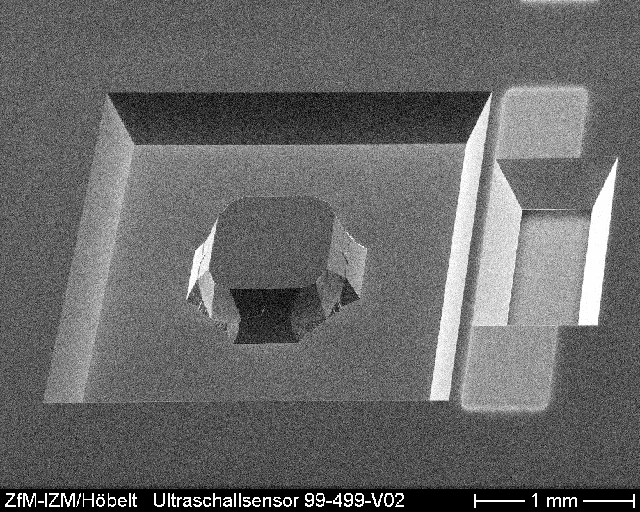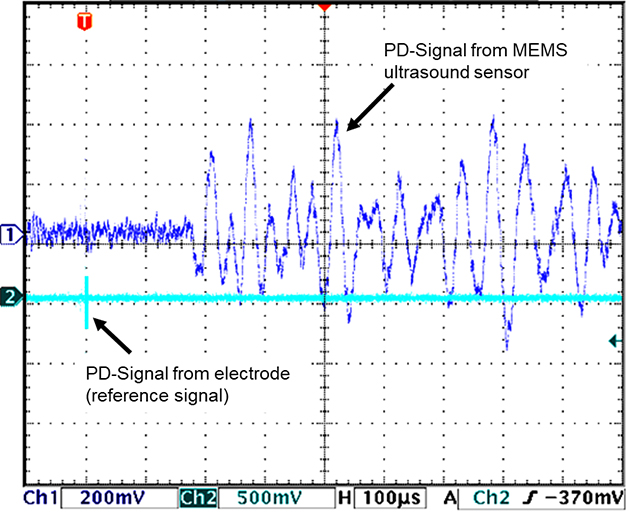Partial discharge sensor using an immersed MEMS transducer


Different principles of the detection of partial discharges within oil filled operating supplies for middle voltage and high voltage application (transformers, Peterson coils) are followed so far. The detection of the electromagnetic wave caused by the partial discharge by electronic means and the detection of structure born sound at the outer side wall of the case are the commonly used ones. The noise is generated by the intensive heating of the oil within the electric current channel during the partial discharge and spreads throughout the oil. This investigation reports about the use of a low cost MEMS ultrasound sensor, that is immersed in the oil.The MEMS sensor contains a silicon membrane with a rigid body in the center and applies a capacitive read out. The membrane is fabricated by etching. The counter electrode is built by a second silicon part beneath the membrane part. Silicon direct bonding with an intermediate SiO2 layer is used to fabricate the devices at wafer level. The right figure shows the signal from the MEMS ultrasound sensor and a signal of the partial discharge that has been detected by an electric probe as reference signal and to trigger the signal recording. The partial discharge was set to approximately 1000 pC in this case. The output signal of the MEMS ultrasound sensor is time delayed due the limited speed of the sound in oil.
 Fraunhofer Institute for Electronic Nano Systems
Fraunhofer Institute for Electronic Nano Systems